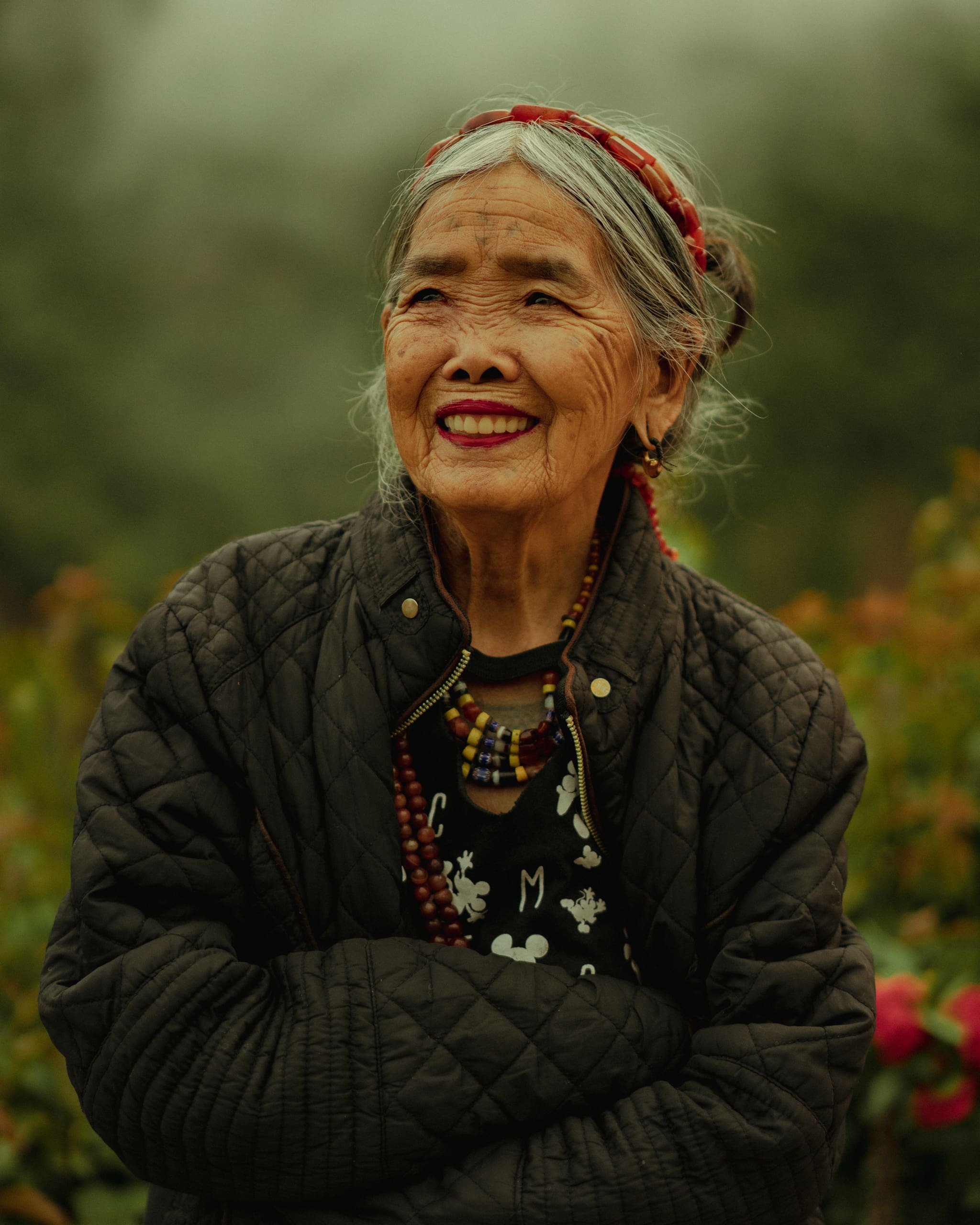Photo by Artu Nepomuceno
“I’ll only stop when I can no longer see, so I can continue to give people the mark of Buscalan.”
Apo Whang-Od has long been touted as a purveyor of her craft, the once-dying art of stick and thorn tattooing. After the world first took notice of her just over 15 years ago, the ancient method has been revived. Thanks to the now 106-year-old mambabatok, a new generation of tattoo artists have emerged, eager to carry on the tradition.
However, the resurgence comes with a small price; change. Apo Whang-Od tells Vogue Philippines how different Buscalan has been since then. The village’s principal livelihood was once limited to things like farming. With the emergence of tourism, locals have found new livelihoods as tattoo apprentices or tour guides.
Whang-Od’s grand-niece, 26-year-old Grace Palicas, says she remembers a time when tattooing was just a pastime. “Parang practice, kumbaga,” she says. “Tinuro na ako ni Apo. Pag nagtattatoo siya, tinitingnan ko kung pano niya ginagawa. Dun aka natuto.” [It was just practice, so to speak. I was taught by Apo Whang-Od. When she would tattoo, I would watch. That’s how I learned.]
Hundreds have now followed in Palicas’ footsteps, bringing along with them another cultural evolution. One of the young mambabatok, Aiza Ayangao, tells us how tattoos are used to represent beauty for women. The more you had, the more beautiful you were considered. Whereas men earned their tattoos when they had killed or shown bravery.
“Naging art an siya,” she says. [It’s now considered art.] Though not all the elders in the village have embraced the evolving values, Apo Whang-Od remains grateful for the influx in popularity. “It’s greatly helped our community,” she remarks.
“I’m very happy to have visitors from far away come and see us,” the mambabatok continues. It’s clear to anyone who meets her how full of spirit and passion she still is. Despite being a centenarian, she’s made it clear that she plans to continue practicing her art for as long as she is able to. With each tap, the artist imparts a piece of history onto every willing canvas, leaving a literal and figurative mark on the world.
“Why not keep tattooing while I can see?” Apo Whang-Od says. “I’ll only stop when I can no longer see, so I can continue to give people the mark of Buscalan, the mark of Kalinga.”
